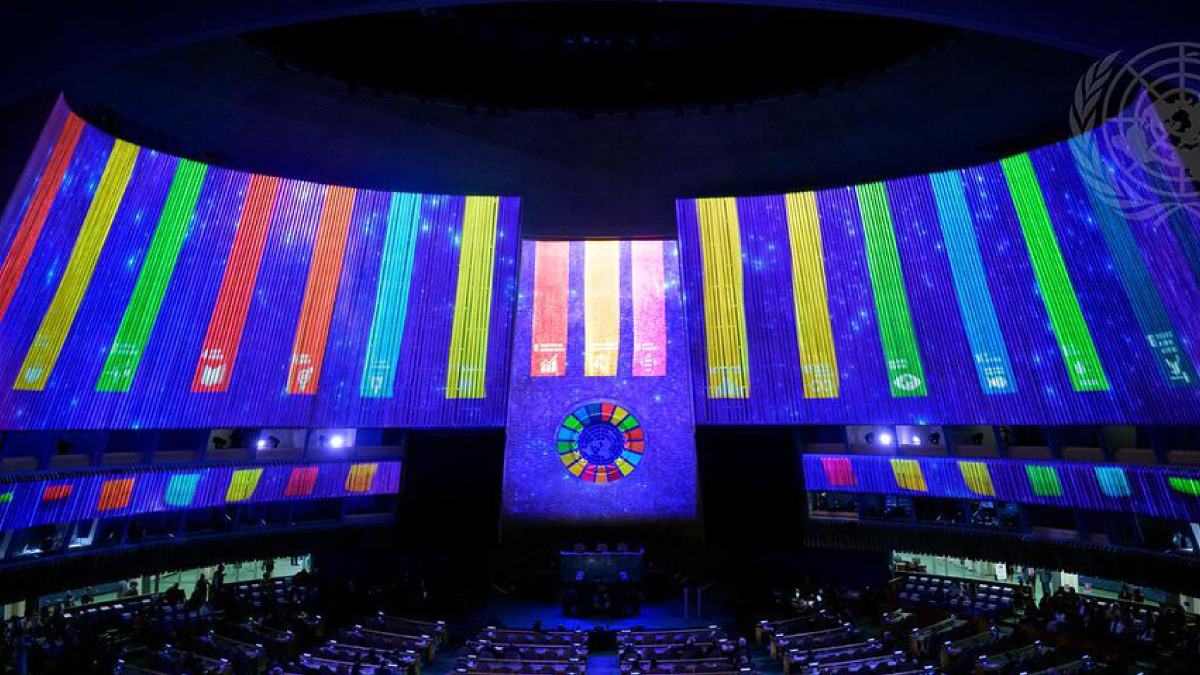Thirty years young: what makes investment promotion networks thrive – fDi Intelligence

Report on the Evolution of Investment Promotion Agency Networks and Alignment with Sustainable Development Goals
1.0 Historical Context and Establishment
The 30th anniversary of the World Association of Investment Promotion Agencies (WAIPA) marks a significant milestone in global investment promotion. The proliferation of Investment Promotion Agencies (IPAs) began in the 1990s, driven by a surge in foreign direct investment (FDI) and the liberalization of investment regimes. International organizations were instrumental during this formative period.
- United Nations Conference on Trade and Development (UNCTAD): Played a foundational role in establishing WAIPA in 1995, creating a platform for IPA executives to collaborate.
- World Bank’s Multilateral Investment Guarantee Agency (MIGA): Launched early cooperation programs and digital interfaces, such as IPAnet, to connect IPAs with investors.
The initial mandate of these networks was to professionalize the nascent field of investment promotion and facilitate the sharing of best practices, a mission that remains a core principle.
2.0 The Paradigm Shift Towards Sustainable Development
The adoption of the United Nations’ Sustainable Development Goals (SDGs) in 2015 catalyzed a fundamental transformation in the mission of IPAs and their networks. The focus has shifted decisively from maximizing FDI volumes to attracting and facilitating sustainable, impact-driven investment that directly contributes to the 2030 Agenda.
- Strategic Reorientation: IPA strategies are now increasingly geared towards attracting investment in sectors critical to achieving the SDGs, such as renewable energy (SDG 7), sustainable infrastructure (SDG 9), and healthcare (SDG 3).
- Capacity Building for SDG Investment: Networks, often in partnership with UN agencies, have developed specialized training programs. These initiatives are designed to equip IPAs, particularly in least developed countries, with the tools to attract, evaluate, and facilitate SDG-aligned projects.
- Focus on Impact: The agenda has evolved towards a comprehensive framework centered on investment facilitation for sustainable outcomes, ensuring that FDI contributes positively to social and environmental development goals.
3.0 Enhanced Collaboration for SDG Attainment
The emphasis on sustainable development has fostered closer alignment between IPAs and other key development actors, reinforcing their role in implementing national strategies for achieving the SDGs.
- Partnerships with Special Economic Zones (SEZs): Collaboration between IPA networks and SEZ associations, including the Global Alliance of Special Economic Zones, facilitates cross-border promotion of investment for sustainable development.
- Integration with Development Institutions: IPAs are no longer viewed as peripheral government units but as central institutions whose importance in channeling capital towards national development priorities and the SDGs is widely recognized.
- Cross-Industry Collaboration: These enhanced partnerships enable a more holistic approach to attracting investment that meets the interconnected challenges of the SDGs.
4.0 Future Outlook and Continued Relevance
The journey towards fully integrating the SDGs into global investment is ongoing. IPA networks are more critical than ever for helping members navigate a complex global landscape and maintain their focus on sustainable outcomes. Key contemporary challenges include:
- Declining global FDI levels
- Rising economic protectionism
- Global trade and supply chain disruptions
- The integration of artificial intelligence and other new technologies
To remain effective, IPAs will continue to rely on these networks for technical expertise, collective advocacy, and strategic guidance. Their continued evolution is essential to ensure that global investment is effectively channeled towards achieving the Sustainable Development Goals.
Analysis of the Article in Relation to Sustainable Development Goals
1. Which SDGs are addressed or connected to the issues highlighted in the article?
-
SDG 17: Partnerships for the Goals
This is the most prominent SDG in the article. The text is centered on the creation, evolution, and importance of partnerships and collaborative networks among Investment Promotion Agencies (IPAs). It details the role of global bodies like the World Association of Investment Promotion Agencies (Waipa), UN agencies like Unctad, and regional networks such as ANIMA and the Caribbean Association of Investment Promotion Agencies. The article states, “partnerships between IPA networks, SEZ associations and the recently established Global Alliance of Special Economic Zones also facilitate cross-border and cross-industry collaboration in the promotion of investment for development.” This highlights the multi-stakeholder collaboration essential to SDG 17.
-
SDG 8: Decent Work and Economic Growth
The fundamental purpose of the IPAs discussed in the article is to attract Foreign Direct Investment (FDI) to drive economic development. The article notes that the proliferation of IPAs was “driven by a sharp rise in foreign direct investment.” By promoting and facilitating investment, these agencies directly contribute to economic growth, which is the central theme of SDG 8. The shift towards “sustainable, impact-driven investment” further aligns their work with the goal of achieving sustainable economic growth.
2. What specific targets under those SDGs can be identified based on the article’s content?
-
Targets under SDG 17 (Partnerships for the Goals)
- Target 17.3: Mobilize additional financial resources for developing countries from multiple sources. The article’s entire focus is on the role of IPAs and their networks in attracting FDI, which is a critical external financial resource for development.
- Target 17.5: Adopt and implement investment promotion regimes for least developed countries. The article explicitly mentions the development of “Dedicated training programmes… in areas such as supporting IPAs in least developed countries to attract SDG-related investment.”
- Target 17.9: Enhance international support for implementing effective and targeted capacity-building in developing countries to support national plans to implement all the Sustainable Development Goals. The article states that for three decades, “these networks have been vital in helping IPAs build capacity, define their relevance and strengthen resilience.”
- Target 17.16: Enhance the global partnership for sustainable development, complemented by multi-stakeholder partnerships that mobilize and share knowledge, expertise, technology and financial resources. The article is a case study of this target in action, describing the creation and function of Waipa, Unctad’s World Investment Forum, and other networks designed to “promote collaboration among IPAs and to share experiences.”
-
Targets under SDG 8 (Decent Work and Economic Growth)
- Target 8.a: Increase Aid for Trade support for developing countries, in particular least developed countries. The support provided by international organizations like Unctad and the World Bank to establish and build the capacity of IPAs in developing nations is a form of technical assistance that helps these countries attract investment and participate more fully in the global economy, which is the spirit of this target.
3. Are there any indicators mentioned or implied in the article that can be used to measure progress towards the identified targets?
-
Indicators for SDG 17
While the article does not cite specific SDG indicator codes, it implies several metrics for measuring progress:
- Implied Indicator for Target 17.3: The article’s historical focus on “maximising FDI volumes” directly points to Indicator 17.3.1: Foreign direct investment (FDI), official development assistance and South-South cooperation as a proportion of total domestic budget. The volume of FDI attracted is the primary metric of success for the activities described.
- Implied Indicator for Target 17.5: The mention of specific programs for “supporting IPAs in least developed countries” implies progress can be measured by Indicator 17.5.1: Number of countries that adopt and implement investment promotion regimes for least developed countries. The establishment and strengthening of these IPAs is the tangible outcome.
- Implied Indicator for Target 17.9: The reference to “Dedicated training programmes” and “co-operation programmes and platforms” launched by Unctad and the World Bank implies measurement through Indicator 17.9.1: Dollar value of financial and technical assistance (including through North-South, South-South and triangular cooperation) committed to developing countries.
-
Indicators for SDG 8
The article implies a key economic indicator:
- Implied Indicator for Target 8.a: The entire narrative is built on the premise that attracting FDI leads to economic growth. The “sharp rise in foreign direct investment” is presented as a positive economic driver. This links the activities of IPAs to broader economic outcomes measured by indicators like Indicator 8.1.1: Annual growth rate of real GDP per capita, as FDI is a major contributor to GDP.
4. Summary Table of SDGs, Targets, and Indicators
| SDGs | Targets | Indicators (Implied from the Article) |
|---|---|---|
| SDG 8: Decent Work and Economic Growth | 8.a: Increase Aid for Trade support for developing countries, in particular least developed countries. | 8.1.1: Annual growth rate of real GDP per capita (as the ultimate outcome of attracting FDI mentioned in the article). |
| SDG 17: Partnerships for the Goals | 17.3: Mobilize additional financial resources for developing countries from multiple sources. | 17.3.1: Foreign direct investment (FDI) as a proportion of total domestic budget (implied by the focus on maximizing FDI volumes). |
| 17.5: Adopt and implement investment promotion regimes for least developed countries. | 17.5.1: Number of countries that adopt and implement investment promotion regimes for LDCs (implied by the support for IPAs in these countries). | |
| 17.9: Enhance international support for implementing effective and targeted capacity-building in developing countries. | 17.9.1: Dollar value of financial and technical assistance committed to developing countries (implied by the mention of training and cooperation programs). | |
| 17.16: Enhance the global partnership for sustainable development. | The existence and collaboration of networks like Waipa, ANIMA, and partnerships with Unctad and the World Bank serve as a qualitative indicator of this target. |
Source: fdiintelligence.com
What is Your Reaction?
 Like
0
Like
0
 Dislike
0
Dislike
0
 Love
0
Love
0
 Funny
0
Funny
0
 Angry
0
Angry
0
 Sad
0
Sad
0
 Wow
0
Wow
0















































/environment-climate-change-and-health-(ech)/water-sanitation-hygiene-and-health-(wsh)/landfill-tuvalu-36092.tmb-1200v.jpg?sfvrsn=5c21fe40_1#)


.jpg.webp?itok=0ZsAnae9#)























